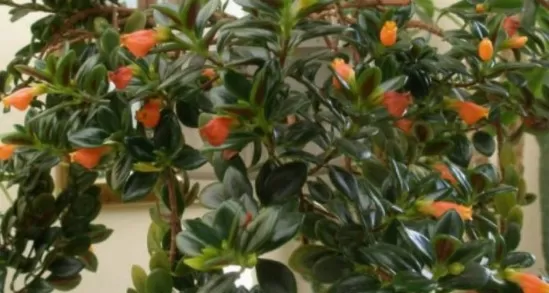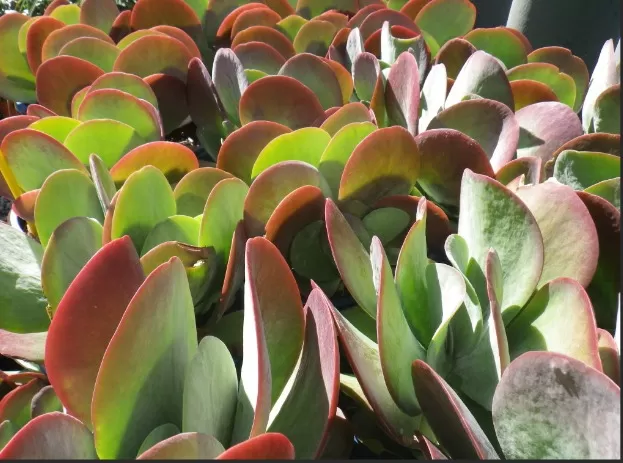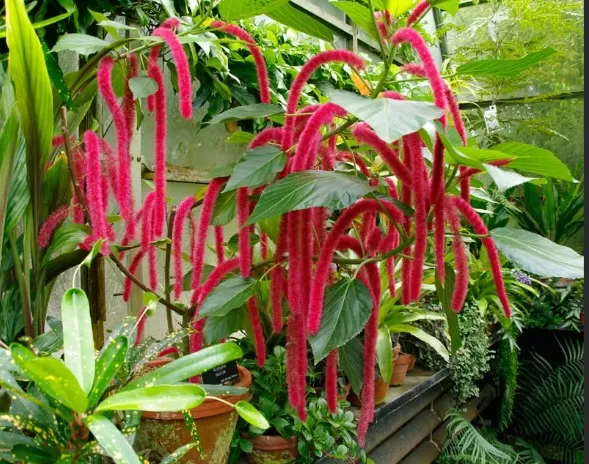Unbelievably Stunning Houseplants That Look Surreal.Indeed, the world of plants never ceases to amaze with its incredible diversity and remarkable adaptations. Among the vast array of flora, you can find plants that closely resemble unexpected objects such as baseballs, bottlebrushes, and Buddhas, among others.
These fascinating botanical wonders are sure to captivate the imagination and spark curiosity.For those intrigued by these extraordinary plants, the good news is that many of them are not difficult to grow. With a little care and attention, you can cultivate these unique specimens in your garden or indoor space, adding a touch of whimsy and wonder to your botanical collection.These extraordinary plants demonstrate the creativity and ingenuity of nature, showcasing forms and shapes that often mirror familiar objects and icons. Their accessibility and ease of cultivation make them a delightful addition to any garden or indoor plant collection. Embrace the joy of gardening as you cultivate these botanical marvels, adding a touch of whimsy and wonder to your green space.
Exploring the Unique Appeal of Indoor Plants: Conversation Starters with a Twist!

For gardening enthusiasts seeking to break free from the ordinary, indoor plants offer an exciting world of conversation pieces that go beyond the familiar angel wing begonia and spider plant.
Embracing a playful and intriguing allure, these peculiar choices often boast names inspired by their uncanny resemblances to various objects or creatures.
Daring gardeners can delight in the diverse range of options available, which promise to add a touch of whimsy and uniqueness to any indoor space.
From whimsical cacti resembling quirky characters to foliage with unexpected shapes and colors, these distinctive plants are sure to captivate the attention of visitors and spark engaging conversations.
However, it is crucial to exercise caution as some of these extraordinary indoor plants may carry mild toxicity.
While their allure is undeniably tempting, those with young children or pets must be mindful of the potential risks if curious little ones are prone to exploring the greenery. With proper care and thoughtful placement, the joys of these captivating indoor plants can be safely enjoyed by all, enriching our living spaces with a delightful touch of nature’s eccentricity.
So, let’s embark on an enchanting journey through the world of indoor plants, where imagination and horticulture converge to create an unforgettable green sanctuary.
The Baseball Plant (Euphorbia obesa): Nature\’s Playful Pitcher!
Resembling a spherical baseball with its distinctive round and “seamy” appearance, the Baseball Plant, scientifically known as Euphorbia obesa, dons a unique greenish-gray and lavender plaid “sport coat,” setting it apart from conventional cowhide-covered baseballs.
This fascinating succulent initially sprouts leaves during its seedling stage, but these soon make way for the growth of an obese “stitched-together” sphere, which intriguingly serves as its stem.
Like a seasoned player on the field, the Baseball Plant proves to be a low-maintenance team member in any indoor garden.
Its adaptability and resilience make it a joy to care for, thriving effortlessly in reasonably bright locations. Moreover, this hardy succulent demands minimal watering, requiring no water at all during the winter months and only sparing amounts during the summer.
With the Baseball Plant by your side, you’re guaranteed not to strike out in the world of indoor gardening.
Its striking appearance and easy-care nature make it a winning addition to any plant enthusiast’s collection, adding a playful touch of botanical charm to your living space. So, step up to the plate and welcome this delightful succulent into your home to experience the joy of nurturing nature’s very own whimsical pitcher!.
The Flapjack Plant (Kalanchoe tetraphylla): A Pancake-sized Succulent Delight!

For gardening enthusiasts seeking a touch of the extraordinary, the Flapjack Plant, scientifically known as Kalanchoe tetraphylla, is a succulent that will surely leave them flipping with excitement.
This unique variety forms charming rosettes of large leaves, reminiscent in size to delectable pancakes. As described in Tovah Martin’s book, The Unexpected Houseplant, these mesmerizing plants can take on a more romantic allure with their often red-tinged appearance, resembling gigantic roses with elegantly wavy leaves.
To bring out the best in these lovely leaves, providing ample sunlight is the key.
The Flapjack Plant’s foliage blushes with beauty when given the gift of sunshine. However, experienced growers are wise to prevent the plant from sending up flower stalks.
This is because, like a jack that never returns after it exits the scene, the Flapjack Plant ceases to exist after blooming.
Embracing the Flapjack Plant into your indoor garden promises a delightful display of botanical uniqueness and charm.
Its pancake-sized leaves and intriguing growth habits make it a conversation starter and a centerpiece of admiration. Just remember to bask this succulent in the sun’s glow while steering clear of flower stalks, and you’ll enjoy the perpetual beauty of this succulent wonder.
So, prepare to flip over the Flapjack Plant and savor its enchanting presence in your green haven.
The Buddha\’s Belly Plant (Jatropha podagrica): A Serene Succulent with a Playful Physique!
With a paunch often likened to a bottle, the Buddha’s Belly Plant, scientifically known as Jatropha podagrica, gracefully carries its lobed foliage aloft, akin to Buddha’s iconic parasol.
Adding to its allure, this enchanting succulent produces striking orange-red flowers that resemble delicate coral right off the reef, creating a captivating display of nature’s artistry.
Despite its somewhat peculiar physique, the Buddha’s Belly Plant is sure to evoke a few belly laughs and smiles from onlookers.
Embracing its unique appearance, this plant thrives on partial sunlight and requires only occasional watering to maintain its composure and charm.
As the winter season approaches, do not fret over the dropping of its leaves.
Far from implying bad karma, this behavior simply signifies that the Buddha’s Belly Plant is deciduous by nature, shedding its leaves as a natural part of its growth cycle.
Incorporating the Buddha’s Belly Plant into your indoor garden will bring a touch of serenity and playfulness to your space.
Its resemblance to the enlightened figure of Buddha adds a spiritual connection, while its vibrant flowers and captivating physique serve as a reminder of the beauty and diversity of the natural world. So, let this delightful succulent be a source of inspiration and joy, radiating peaceful vibes and serving as a constant reminder of the wondrous balance between nature and nurture.
The Chenille Plant (Acalypha hispida): Nature\’s Playful Caterpillar in Your Garden!

True to its name, “Chenille,” which means “caterpillars” in French, this extraordinary plant, scientifically known as Acalypha hispida, boasts long red catkins that elegantly dangle from the leaf axils.
Resembling the fuzzy bodies of wooly worms, the swaying catkins can also conjure images of graceful feline tails or the beloved pipe cleaners often used in children’s crafts. It’s a whimsical addition to any garden that will surely spark the imagination and delight of onlookers.
The Chenille Plant’s large and heart-shaped leaves further add to its charm, creating a stunning contrast with the vibrant red catkins.
While its appearance might be reminiscent of succulents, growing the Chenille Plant requires a bit more attention and care. Thriving in its full glory, this playful caterpillar-like beauty demands abundant sunlight, regular watering, and diligent pruning to maintain its shape and health.
Though it may present some challenges, the rewards of nurturing the Chenille Plant are unmatched.
Where else in the plant kingdom can you find such delightful tails gracefully tucked between its heart-shaped leaves? Embracing the Chenille Plant in your garden brings a touch of whimsy and a unique character that will leave visitors enchanted by nature’s creativity.
So, let this charming caterpillar-like plant weave its magic in your green sanctuary, adding a dash of playfulness and artistic flair to your gardening endeavors.
The Chenille Plant promises to be a conversation starter, a visual delight, and a source of endless admiration for its one-of-a-kind beauty.
*The information is for reference only.